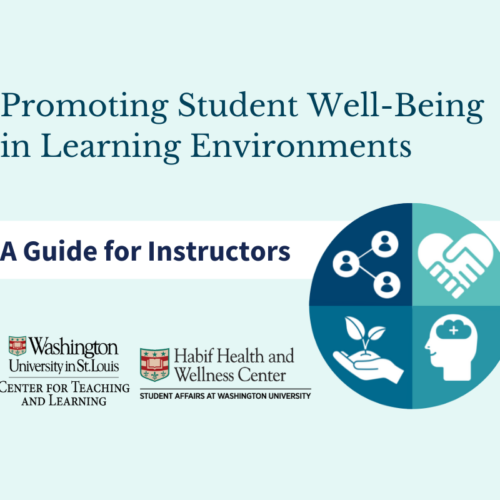Fall Clicker Community Meeting
The fall Clicker Learning Community meeting was held on September 29, 2016, and 15 faculty from two schools and seven departments attended. Washington University has had a Clicker Learning Community for three years. The community was started through our AAU grant and meets approximately two-three times a year to discuss strategies for integrating active learning via clickers (or other personal-response systems) in our courses.
The discussion topic for this meeting was transition strategies for beginning and ending “clicker” questions during a class. Faculty reported using a variety of question strategies at the beginning of class such as a pre-test, review or warm-up or to introduce the topic for the day. In the middle of class, they used questions to re-energize and increase student engagement or to allow students to practice applying current material, and at the end of class they used questions as an assessment tool for what students understood the best or least during class that day. Some faculty use clicker questions throughout their class for a variety of purposes.
Faculty reported using several strategies for transitioning into a clicker question, such as using a clicker icon on the screen or coloring the clicker question slide background a different color than the other slides. An interesting question arose: “Should you read the clicker question?” Most instructors reported posting the clicker question on a screen. A number of instructors reported reading the question and sometimes the answers as a strategy for supporting nonnative English students. Other instructors read the question because they sometimes embellished the question with additional information as they read the question. A few instructors had handouts with clicker questions on them while displaying the question on a screen.
Student small-group discussions were commonly used in conjunction with clicker questions to help students collaborate to refine and assess what they know and do not know. At the end of the discussion about a clicker question, faculty summarized the rationale for the correct answer as well as a brief explanation for why the others answers are incorrect. This activity can be done by the instructor or by asking students to describe why someone might have chosen the correct as well as incorrect answers. This review provides the students with closure and can address students’ misconceptions about a topic.
Omar Abdelaziz (Olin Business School) and Ron Cytron (Computer Science) demonstrated a new clicker alternative, textwashu. This application allows students to use their cell phones or computers to send questions and/or answers in real time to the faculty member during class. If you have questions about this application please contact Omar (oabdelaziz@wustl.edu) or Ron (cytron@wustl.edu).
We will be having our next meeting in the spring and encourage any faculty using active learning to participate in this community. If you have any questions about the clicker learning community or want to talk about clickers or teaching please contact Shawn Nordell (shawn.nordell@wustl.edu).
There is an upcoming workshop–“Implementing ‘Clicker-Type’ Questions in the Classroom”–at noon on November 17, where we will build on some of the ideas discussed in the fall clicker meeting and I hope to see you at the workshop!


